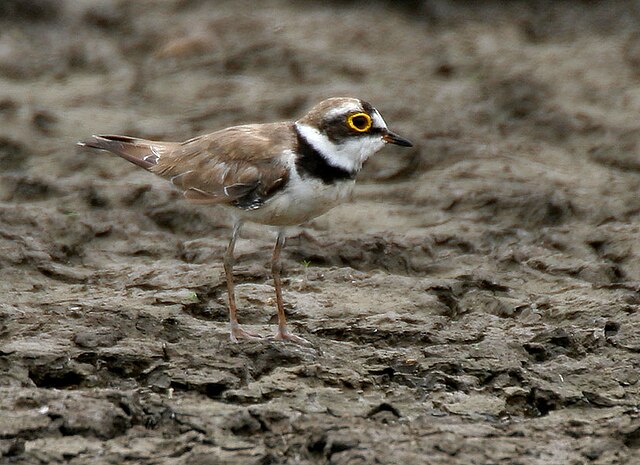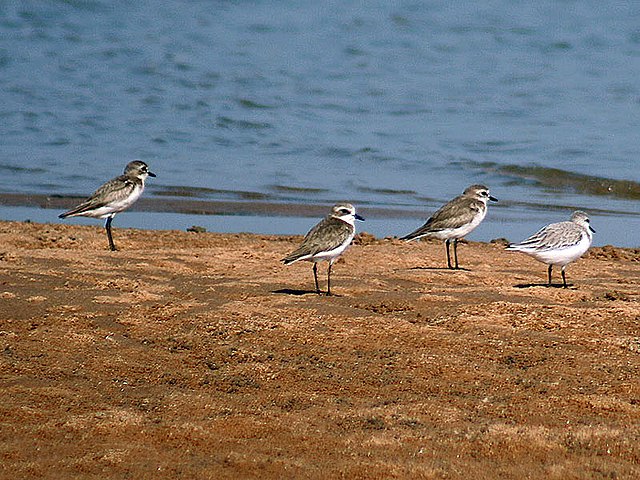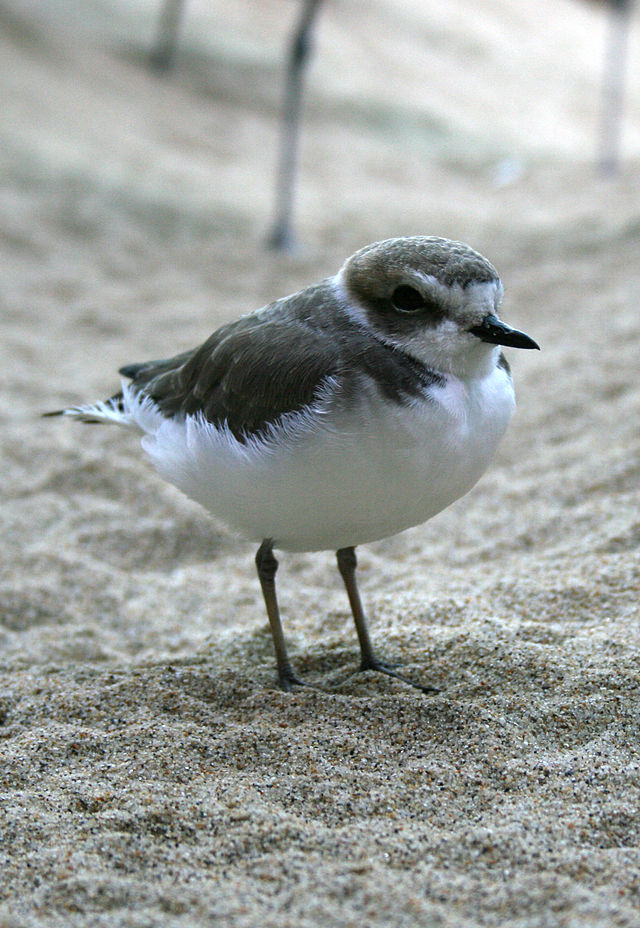Top Qs
Timeline
Chat
Perspective
Plover
Family of birds From Wikipedia, the free encyclopedia
Remove ads
Plovers (/ˈplʌvər/ PLUV-ər,[1] also US: /ˈploʊvər/ PLOH-vər)[2] are members of a widely distributed group of wading birds of the subfamily Charadriinae. The term "plover" applies to all the members of the subfamily,[1] though only about half of them include it in their name.[1]




Remove ads
Species list in taxonomic sequence
Summarize
Perspective
The taxonomy of family Charadriidae is unsettled. At various times the plovers, dotterels, and lapwings of family Charadriidae have been distributed among several subfamilies, with Charadriinae including most of the species. The International Ornithological Congress (IOC) and the Clements taxonomy do not assign species to subfamilies.[3][4] The South American Classification Committee of the American Ornithological Society (AOS) includes all of the species in Charadriinae.[5] The North American Classification Committee of the AOS and BirdLife International's Handbook of the Birds of the World separate the four members of genus Pluvialis as subfamily Pluvialinae.[6][7][8]
The IOC recognizes these 69 species of plovers, dotterels, and lapwings in family Charadriidae. They are distributed among 11 genera, some of which have only one species. This list is presented according to the IOC taxonomic sequence and can also be sorted alphabetically by common name and binomial.[3]
Remove ads
Description
Plovers are found throughout the world, with the exception of the Sahara and the polar regions, and are characterised by relatively short bills. They hunt by sight, rather than by feel as longer-billed waders like snipes do. They feed mainly on insects, worms or other invertebrates, depending on the habitat, which are obtained by a run-and-pause technique, rather than the steady probing of some other wader groups.[9] Plovers engage in false brooding, a type of distraction display. Examples include pretending to change position or to sit on an imaginary nest site.
Remove ads
In folklore
The European golden plover[10] spends summers in Iceland, and in Icelandic folklore, the appearance of the first plover in the country means that spring has arrived. The Icelandic media always covers the first plover sighting.[11]
See also
References
Wikiwand - on
Seamless Wikipedia browsing. On steroids.
Remove ads

